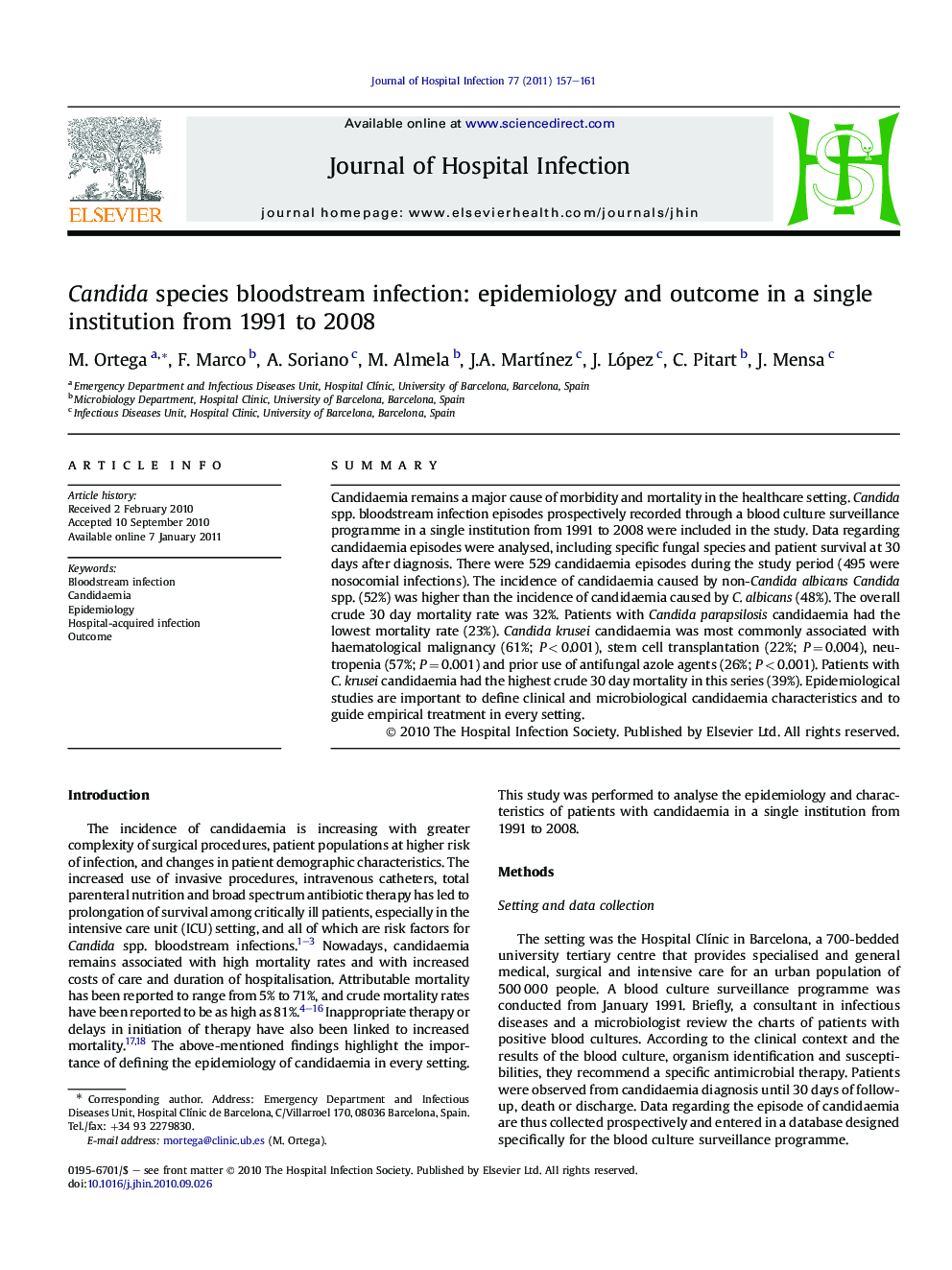| Article ID | Journal | Published Year | Pages | File Type |
|---|---|---|---|---|
| 6122524 | Journal of Hospital Infection | 2011 | 5 Pages |
Abstract
Candidaemia remains a major cause of morbidity and mortality in the healthcare setting. Candida spp. bloodstream infection episodes prospectively recorded through a blood culture surveillance programme in a single institution from 1991 to 2008 were included in the study. Data regarding candidaemia episodes were analysed, including specific fungal species and patient survival at 30 days after diagnosis. There were 529 candidaemia episodes during the study period (495 were nosocomial infections). The incidence of candidaemia caused by non-Candida albicans Candida spp. (52%) was higher than the incidence of candidaemia caused by C. albicans (48%). The overall crude 30 day mortality rate was 32%. Patients with Candida parapsilosis candidaemia had the lowest mortality rate (23%). Candida krusei candidaemia was most commonly associated with haematological malignancy (61%; P < 0.001), stem cell transplantation (22%; P = 0.004), neutropenia (57%; P = 0.001) and prior use of antifungal azole agents (26%; P < 0.001). Patients with C. krusei candidaemia had the highest crude 30 day mortality in this series (39%). Epidemiological studies are important to define clinical and microbiological candidaemia characteristics and to guide empirical treatment in every setting.
Related Topics
Life Sciences
Immunology and Microbiology
Applied Microbiology and Biotechnology
Authors
M. Ortega, F. Marco, A. Soriano, M. Almela, J.A. MartÃnez, J. López, C. Pitart, J. Mensa,
